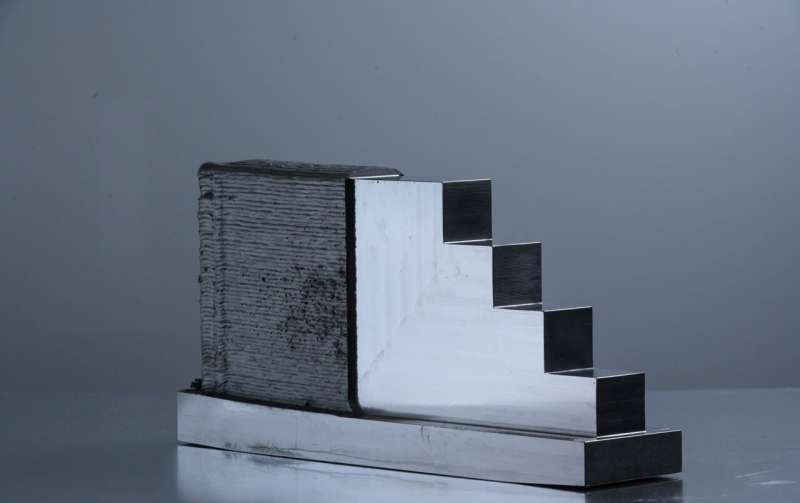This article has been reviewed according to Science X's editorial process and policies. Editors have highlighted the following attributes while ensuring the content's credibility:
fact-checked
proofread
Steel components from the 3D printer: Deposition welding in XXL format

Manufacturing individual large-scale components is usually an energy- and material-intensive affair. In the "XXL3DDruck" project, scientists at the Laser Zentrum Hannover e.V. (LZH) have joined forces with partners to test a more resource-efficient way of producing XXL components.
To this end, they produced parts of a ship gearbox housing with a mass of up to three tons layer by layer in an oversized 3D printer using a laser-assisted arc welding process.
XXL 3D printing to save energy and material in production
The XXL printer with an installation space of 3 x 4.5 meters, which is used as a prototype for research and development purposes only, is located at the marine gearbox manufacturer REINTJES in Hameln. It uses laser-assisted arc deposition welding, a high-performance additive process method for metals that achieves high mass throughput. The consortium can apply up to 3.2 kilograms of steel per hour with the printer.
The process can reduce the use of material and energy compared to conventional manufacturing methods: Classically, individual molds are made for the components of marine gearbox housings. This work step is eliminated in Additive Manufacturing. Material and weight can also be saved because components can be redesigned and constructed differently—with hollow walls, for example. Laser-assisted arc deposition welding can also implement individual, component, and customer-specific design requirements.
Resources are also saved in ship operation
XXL printing conserves resources during production and later during the operation of the ship—if less material is used, the ship has to accelerate less mass and thus also requires less fuel.
A part of a ship's gearbox housing, which is currently still being manufactured, serves as a demonstrator. Through Additive Manufacturing, the project participants would like to reduce the weight of a ship gearbox housing by several tons. The long-term goal for production is to reduce manufacturing and procurement time as well as to save raw materials such as steel by reducing the amount of material used per housing.




















